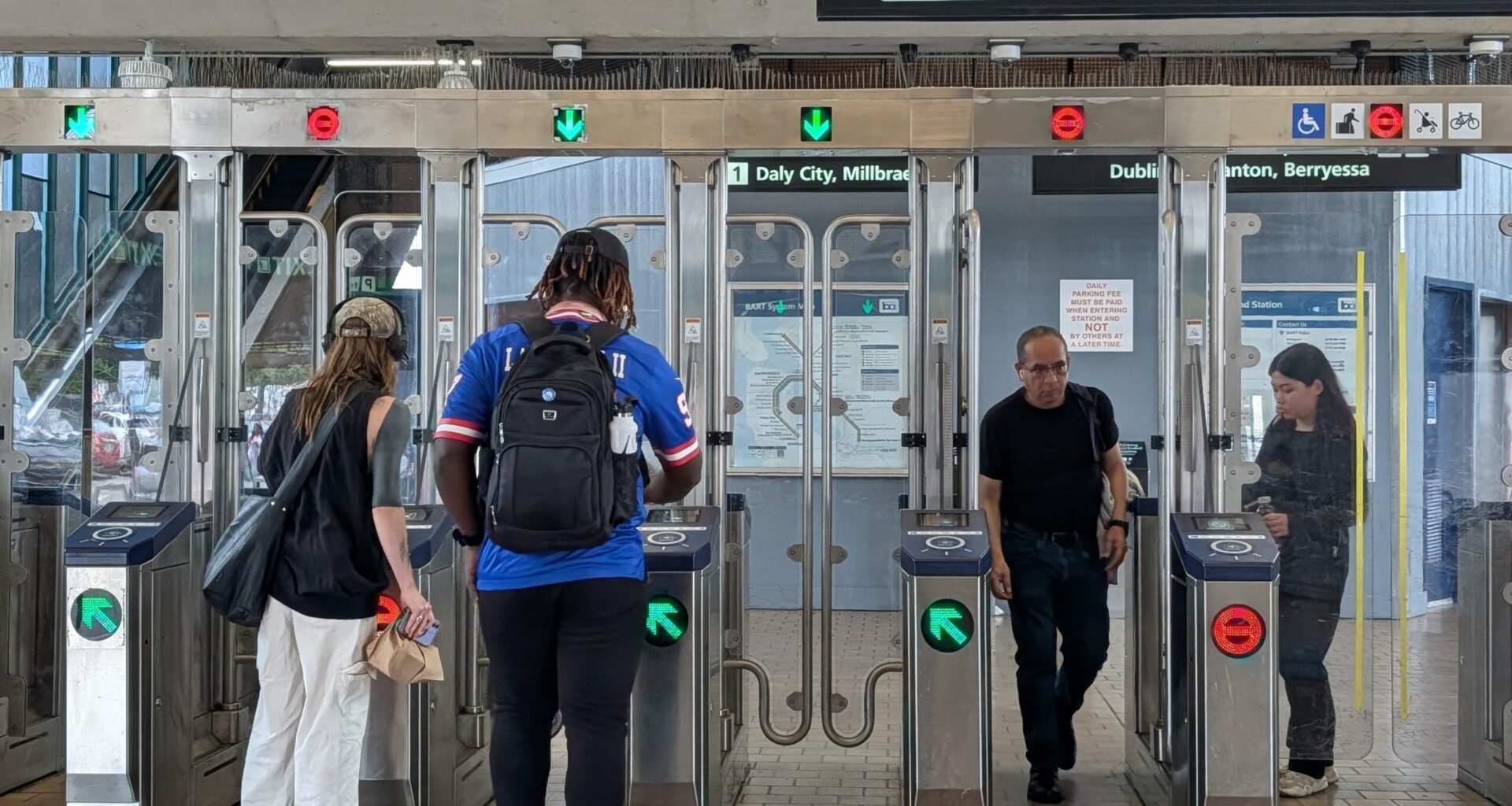BART made a big investment in new fare gates at all 50 stations to ensure riders pay to enter. But some commuters say they still see people cheating the system, and BART concedes the new gates need tweaking.
“Once the gates open, anyone can go in,” said Rick West, an Oakland resident who has been riding BART for 20 years.
BART officials touted the fare evasion gates, a $90 million systemwide project to install 6-foot-tall gates, at a press conference in Dublin in September, saying the barriers have deterred fare evasion by 50%. Robert Powers, BART’s general manager, celebrated the success as workers installed the last fare gates at the West Dublin/Pleasanton BART Station.
“This is the latest in the string of victories for riders that are transforming the daily BART experience,” Powers said.
A riders survey conducted by BART between April and June and made public in September, found that 10% of riders reported seeing fare evasion, down from 22% earlier this year. Citations given to those who did not have proof of payment plunged from 2,200 in January to less than 1,000 in July, according to agency data.
Fare evasion has hurt BART’s revenue for years, costing the transit agency up to $9.5 million annually, according to a 2025 report on BART’s fare enforcement by The Center for Policing Equity, a nonprofit research organization that advances racial justice and public safety. The group partnered with BART to assess the impact of fare evasion strategies on public safety.
At one point, fare revenue covered nearly 70% of BART’s operation expenses, but in the 2024 fiscal year, only 22% of operating costs were covered by fares, according to a BART report.
 BART rider Talisha Peterson at the West Oakland Station (All photos by Laurata Pechuqui)
BART rider Talisha Peterson at the West Oakland Station (All photos by Laurata Pechuqui)
At the West Oakland BART Station, where the first gate was installed on Dec. 28, 2023, many people said riders are finding new ways to avoid paying. Gate doors are embedded with sensors and cameras designed to block jumpers and detect multiple entries. Despite the detection system, riders said people can still get through without paying by tailgating, meaning they quickly follow someone who has paid through the gates.
Talisha Peterson, who uses BART to commute to San Francisco for work, said she’s seen people tailgate on several occasions.
“Unless there is someone watching, the gates by themselves won’t stop it,” Peterson said.
Chris Filippi, BART spokesman, said the agency is aware of tailgating and is recalibrating sensors to make it harder for people to do it. But he acknowledged the system’s shortcomings, saying, “There is never going to be a perfect gate.”
Emily Hager, a social worker who uses BART, has noticed a difference. She said before the gates were installed, she would regularly see people sneaking in and jumping over gates.
“I haven’t noticed that since the new gates were installed,” Hager said.
Charles Adam questioned the priorities behind the investment.
“If they made BART cheaper, people would pay, but they are investing in protecting their money,” he said.
The agency has attempted to address equity with programs like Clipper Start, which gives a 50% discount to low-income riders.
“The new gates are about making sure everyone contributes their share,” Filippi said. “We just want to make BART affordable and accessible.”
BART says it’s taken steps to avoid a repeat of the Sept. 5 systemwide shutdown

